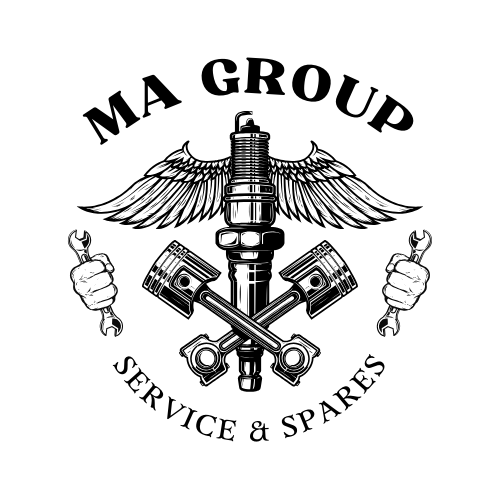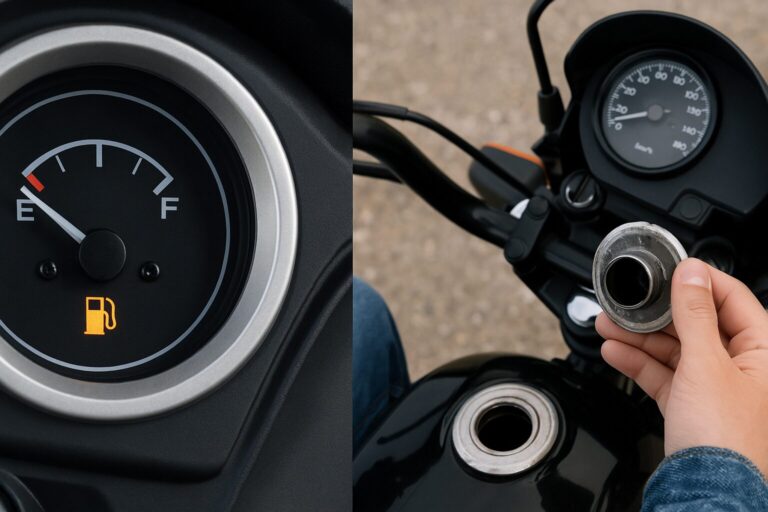FUEL IS THE HEARTBEAT OF EVERY MOTORCYCLE

Fuel is the heartbeat of every motorcycle. Whether you’re riding a modern bike with a digital fuel gauge or a model like the Honda Ace 125cc without one, understanding the role of fuel is key to performance, safety, and efficiency. Here’s a breakdown of why fuel is more than just something you fill up at the pump.
Motorcycle Fuel Essentials: Know Your Bike’s Limits
🔥 1. Fuel Powers the Engine
Motorcycles run on internal combustion engines, which rely on a precise mix of air and fuel. This mixture is compressed and ignited to generate power. Without fuel, the engine won’t start—or if it runs low, it may sputter, stall, or lose performance. Keeping an eye on your fuel level ensures smooth and uninterrupted rides.
🛣️ 2. It Determines How Far You Can Go
Your tank size and fuel efficiency determine your range. For example, if your bike delivers 50 km/l and has a 10-liter tank, you can go roughly 500 km on a full tank. Knowing this helps when planning long-distance trips or when riding in areas without nearby fuel stations.
🧠 3. It Affects Engine Health and Performance
- Clean, high-quality fuel helps your engine run smoothly and prevents long-term damage.
- Running your tank too low too often can suck up sediment from the bottom of the tank or damage the fuel pump.
- Always refuel before hitting reserve or empty—especially on bikes without a fuel gauge.
⚠️ 4. Fuel Awareness is a Safety Issue
Running out of fuel on the road can be dangerous:
- Your engine might cut off in the middle of traffic or during a corner.
- Being stranded in a remote area without fuel can be risky.
If your bike doesn’t have a fuel gauge, use a fuel tap with a reserve setting or track your mileage after each refill to avoid surprises.
💰 5. Fuel Efficiency = Cost Savings
The more efficiently your motorcycle uses fuel, the more money you save over time. Here’s how you can improve fuel economy:
- Ride smoothly—avoid hard acceleration and braking.
- Maintain correct tire pressure.
- Keep your bike regularly serviced.
Good habits mean fewer stops at the pump—and more money in your pocket.
⚙️ 6. Your Reserve Fuel is the Final Warning
Many motorcycles without fuel gauges have a reserve tap, which holds about 1–2 liters of fuel. When you switch to reserve, it’s your last warning: Refuel immediately. It’s wise to learn how far your bike can go on reserve so you’re never caught off guard.
1. When the Dashboard Fuel Gauge Works Properly:
- Fuel gauge needle or digital display: It drops to “E” (Empty) or shows a very low percentage/lit bars.
- Low fuel warning light: Most bikes and cars have a yellow/orange fuel pump symbol that lights up when you’re low on fuel. This usually turns on when there’s about 1–2 liters left in the tank.
- Distance-to-empty reading (on some models): It shows how many kilometers you can still ride/drive with the remaining fuel.
2. When the Dashboard Gauge or Warning Light Does Not Show:
If your gauge or fuel light is faulty or not showing correctly, here’s how to know you’re running low or are out of fuel:
- Bike starts sputtering or losing power, especially during acceleration.
- Engine stalls frequently or suddenly dies.
- Fuel sound test: Open your tank and gently shake the bike—you may not hear any liquid sloshing around if it’s empty.
- Mileage tracking: If you know your fuel tank size and average fuel consumption, you can track how many kilometers you’ve ridden since the last fill-up.
- Example: If your bike does about 40 km/l and your tank is 10 liters, you should expect about 400 km before refill.
Tip:
If your fuel gauge or dashboard isn’t working, it may be a faulty fuel sender unit, wiring issue, or a blown fuse—worth getting it checked by a technician Get a new one at our store https://maxygroup.co.ke/product-category/spare-parts/honda-spare-parts/
✅ Final Thoughts
Fuel isn’t just a basic need—it’s a critical part of motorcycle maintenance, safety, and budgeting. Whether your bike has a fuel gauge or not, knowing your range, tracking mileage, and staying alert to fuel levels will keep your rides smooth, safe, and stress-free.

